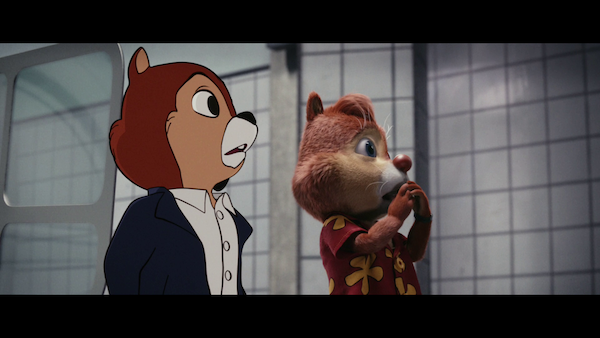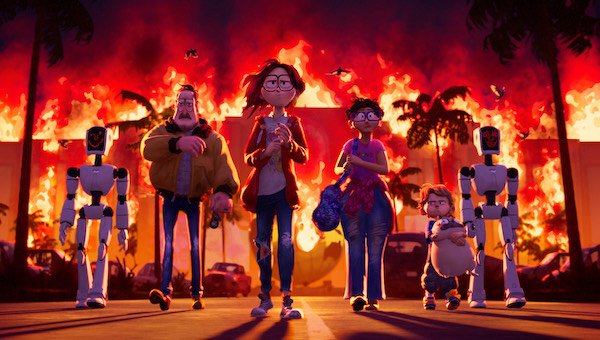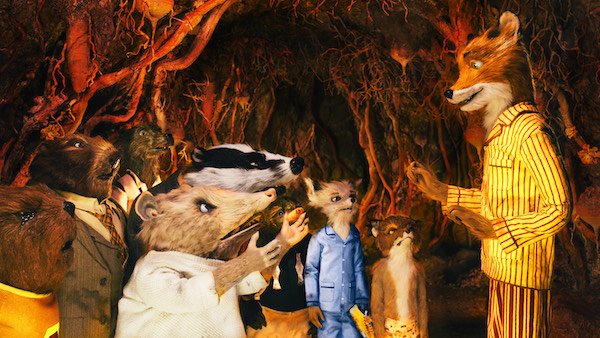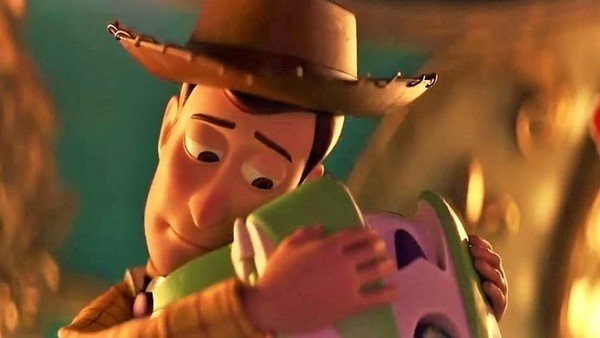Chip 'n Dale: The Art of Animation (That Grown-Ups Can Enjoy Too)
In a best-case-scenario turnout, Chip ‘n Dale: Rescue Rangers is earning widespread acclaim as one of the best Disney comedies in recent memory. Bursting at the seams with creativity and wit, it manages to succeed as a family movie night staple that appeals to adults with its sophisticated palette of meta-humor.
For grown-up movie watchers in the modern world, animation is a tricky medium to enjoy wholeheartedly. Unless there’s some nostalgic connection to the property, much of the time we’re jaded to the spark of joy we felt as kids. The older we get, the harder it becomes to find the heart and soul in big studio movies like DC League of Superpets or Minions.
But just below the veil of artifice, there’s a conscious formula at play when it comes to animated movies that people of all ages can connect with. In a modern moviegoing scene with such obvious intentions to make as much money as possible, it’s movies like Chip ‘n Dale: Rescue Rangers that help remind us of what’s still possible in the realm of animated storytelling. And it’s because of this formula that makes these movies work—so let’s dive into their core elements.
1. They put specificity on a pedestal
Mitchells vs. The Machines (2021) - dir. Michael Rianda
Phil Lord and Chris Miller are a filmmaking pair who instinctively know how to shatter preconceptions with everything they do. With the backing of Netflix, the duo helped produce this highly imaginative comedy about a dysfunctional family that bands together to stop a looming AI apocalypse.
On the long list of things that make this 2021 Oscar nominee a bonafide hit for grown-ups is the unwavering singularity of the characters we follow. The script fleshes out characters with distinguished personalities and doles out jokes that are so specific, it points to the craftsmanship that went into making Mitchells vs. The Machines something special. The better we buy into the veracity of its universe, the more it transcends one-dimensionality.
“In every aspect of the movie, from the art style to the characters, we asked ourselves: How can this be as unique and specific as possible? How do we make them like characters you’ve never seen before, and art styles you’ve never seen before, and the type of story you’ve never seen before?”
Michael Rianda | The AV Club
2. They’re not afraid to be bold
Fantastic Mr. Fox (2009) - dir. Wes Anderson
There’s a glaring weakness in a lot of animated features with mass-market appeal: they feel familiar to the point of exhaustion, especially in stories sourced from older texts. The challenge to any great filmmaker is how distinctly they can embellish these stories in a visual medium. And no one captures this essence better than Wes Anderson.
His take on Roald Dahl’s fable about a sly, chicken-thieving fox is all but formulaic. Using stop motion techniques with miniaturized, handcrafted backdrops, Wes Anderson enlivens the classic tale with distinct visual taste: elite cinematography, balanced framing, rich color palettes, and a tremendous voice cast that includes George Clooney, Meryl Streep, Jason Schwartzman, Bill Murray, and Willem Dafoe.
3. Their lessons are enduringly relevant
Toy Story 4 - dir. Josh Cooley
Pixar’s Toy Story franchise is a cultural mainstay whose exploits have elevated the medium to new heights Aside from being obscenely lucrative, the films have held a special place in our hearts because of the characters and what their presence has ultimately stood for over the course of 24 years.
Toy Story operates by one overarching central theme: the passage of time. In the same way that Richard Linklater examines time in Before Sunrise and Boyhood, the Toy Story franchise follows characters that have grown along with its target audience; their perspectives shift, their beliefs toggle, and their bonds are tested.
Pixar has a special way of building emotional attachment with inanimate objects. By the time we arrive at the bittersweet conclusion of Toy Story 4, we’re left with a solemn reflection on these toys and what they’ve ultimately meant to us through different stages of life.
4. They’re clever about ‘fan service’
Who Framed Roger Rabbit (1988) - dir. Robert Zemeckis
Chip and Dale’s latest odyssey has been called a spiritual successor to Robert Zemeckis’ renowned noir comedy that broke barriers in crossover animation. It pioneered the concept of ‘fan service’ way ahead of its time using the likeness of iconic licensed properties in a highly effective manner that still holds up to this day.
Rather than carelessly cramming in as many recognizable figures as one screen will fit, it establishes a shared universe with cameos that feel more earned than forced. It’s a creative endeavor that established a convention that is omnipresent in today’s movies, though they can’t always tap into effectively.
5. They trigger emotions—but don’t manipulate them
The Iron Giant (1999) - dir. Brad Bird
The math is simple: great movies require audience engagement. Animated or not, a movie’s resonance hinges on its ability to deliver a satisfying emotional payoff. Since the dawn of animation, some exemplary titles come to mind, but none pack quite as hard a punch as Brad Bird’s love letter to the beatnik 50s, The Iron Giant.
Set during a period of Cold War panic, The Iron Giant outlines the unlikely friendship between a young boy named Hogarth and a steel behemoth that the government intends to destroy. By placing its focus on that shared connection, its emotional core is grounded in relatable feelings, picking up where Spielberg’s E.T. left off nearly two decades prior.
“The medium itself may have an appeal to kids, but I think the medium is way too powerful for that. And I think that more often you should be trying to appeal to the child in everyone and get to that feeling of wonder and excitement that you have when you’re a child.”
Brad Bird | Entertainment Weekly
6. They let imagination run free
Spirited Away (2001) - dir. Hayao Miyazaki
Everything is possible in the realm of animation; it’s more of a philosophy than a fact, as proven by Hayao Miyazaki. He’s a Japanese visionary whose influence has shaped the creative course of the medium as we know it today. As a co-founder of Studio Ghibli, his art interprets our world through a lens of boundless curiosity.
Spirited Away is an Academy Award-winning masterwork, told through the eager eyes of Chihiro, a 10-year-old who happens upon a strange amusement park inhabited by supernatural spirits. Capitalizing on the point that has made him such a driving force in the sphere of animation, Miyazaki expands our worldview by provoking thought on worlds not often seen.
7. They find new angles on what already exists
Spider-Man: Into the Spider-Verse (2018) - dir. Bob Persichetti, Peter Ramsey, Rodney Rothman
Phil Lord and Chris Miller took aim at the Spider-Man mythology and widened the scale of New York’s favorite web-slinger. Parallel to Marvel Studios’ entry to the multiverse, Sony’s smash hit became a zeitgeist that still rivals any Spider-Man movie to date.
Into the Spiderverse was early on the trend of pulling from different universes, featuring seven different iterations of the iconic hero, slinging through concrete jungles in mind-shattering explosions of color. As an animated movie, it beams through as a spectacular sensory overload that renders the possibilities endless for a pre-existing property as famous as Marvel’s superheroes.







